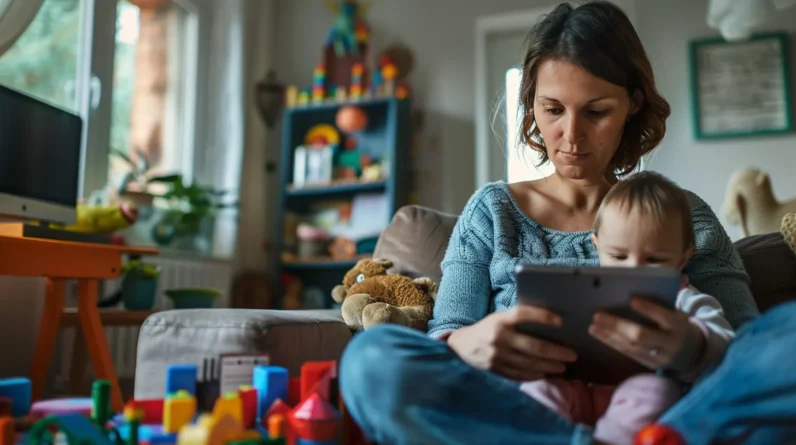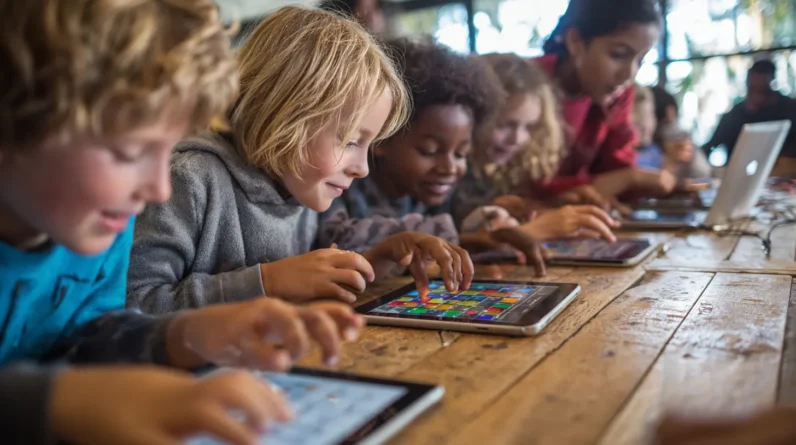
We’re torn between the benefits and drawbacks of smart devices in parenting. On one hand, they offer a wealth of parenting information, connect us with other parents, and provide tools to monitor our kids’ health and education. However, excessive screen time can hinder child development, and online safety is a major concern. As we navigate this digital landscape, we must find a balance between harnessing the advantages of smart devices and minimizing their risks – and that’s where things can get really tough, but that’s just the beginning.
The Benefits of Smart Devices in Parenting
As we navigate the challenges of modern parenting, it’s hard to deny the impact that smart devices have had on our daily lives. We’re more connected than ever, and our devices have become an indispensable tool in our parenting toolkit. With a few taps, we can access a wealth of parenting information, connect with other parents, and even keep our kids entertained. Smart devices have also made it easier for us to manage our busy lives, from scheduling appointments to keeping track of our kids’ activities. We can even use apps to monitor our kids’ health, nutrition, and education. By leveraging smart devices, we can be more informed, organized, and effective parents, giving us a sense of control and confidence in our parenting abilities.
Managing Screen Time and Digital Boundaries
While smart devices have certainly made parenting easier, managing screen time and setting digital boundaries is essential to ensuring our kids develop healthy relationships with technology. We need to establish clear rules and guidelines for screen use, setting limits on the amount of time spent on devices and the types of content they can access. This means being mindful of our own screen use, too – our kids learn from what they see, after all. By setting digital boundaries, we can help our kids avoid the risks associated with excessive screen time, such as addiction, social isolation, and decreased physical activity. By taking control of screen time and digital boundaries, we can help our kids develop the skills they need to navigate the digital world responsibly.
The Impact of Smart Devices on Child Development
Before handing over a smartphone or tablet to our kids, it’s essential that we consider how these devices will shape their young minds. As parents, we need to be aware of the potential impact of smart devices on child development. While these devices can provide endless entertainment and education, they also pose significant risks. Here are a few ways smart devices can influence our children’s development:
- Language delays: Excessive screen time has been linked to delayed language development in toddlers.
- Social-emotional issues: Smart device use can hinder social skills, empathy, and emotional intelligence in children.
- Sleep disturbances: Exposure to screens before bed can disrupt sleep patterns in kids.
- Cognitive addiction: Smart devices can be addictive, affecting attention span and cognitive function in children.
Using Smart Devices for Education and Learning
Although smart devices pose significant risks to child development, they can also be a valuable tool in education and learning when used thoughtfully. We can leverage smart devices to provide our kids with access to a wealth of educational resources, including interactive learning apps, e-books, and educational games. These tools can help our children develop essential skills, such as problem-solving, critical thinking, and creativity. Additionally, smart devices can facilitate personalized learning, allowing our kids to learn at their own pace and explore topics that interest them. By using smart devices in a way that complements traditional teaching methods, we can create a more engaging and effective learning experience for our children. This can be especially beneficial for kids with different learning styles or needs.
Navigating Online Safety and Cyberbullying
As we integrate smart devices into our children’s educational journey, it’s equally important that we acknowledge the potential risks associated with online activity. We’re not just talking about mildly annoying pop-ups or pesky malware; we’re talking about cyberbullying, online predators, and exposure to mature themes. We need to be aware of these risks and take proactive steps to mitigate them. Here are a few ways we can do this:
- Set clear boundaries and rules: Establishing clear expectations for online behavior is essential.
- Monitor online activity: Keep a close eye on what our kids are doing online.
- Use parental controls: Utilize built-in safety features and apps designed to block mature content.
- Encourage open communication: Create a safe space for our kids to talk to us about their online experiences.
Finding a Healthy Balance in the Digital Age
While smart devices have the power to enrich our children’s educational experiences, it’s up to us to guarantee they don’t come at the cost of their physical and mental well-being. We need to establish a balance that allows them to reap the benefits of technology without succumbing to its pitfalls. By setting limits on screen time, encouraging outdoor activities, and engaging in conversations about digital responsibility, we can help our children develop healthy habits. It’s also essential to model the behavior we want to see in our kids. If we’re glued to our screens, they’ll likely follow suit. By finding a healthy balance in the digital age, we can make certain our children thrive in both the virtual and real worlds.
Conclusion
As we navigate the digital age, it’s clear that smart devices are a double-edged sword in parenting. On one hand, they offer a wealth of benefits, from educational resources to safety tools. On the other, they can be a Pandora’s box of distractions, cyberbullying, and screen time addiction. By finding a healthy balance and setting clear boundaries, we can harness the power of smart devices to make parenting easier, not harder – and give our kids the best possible start in life.







